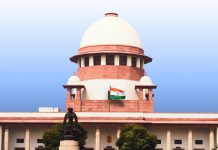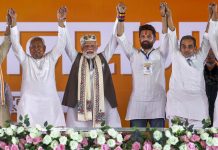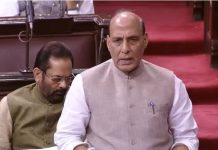When William Shakespeare, whose 400th death anniversary just concluded, penned in the sixteen century in his poetic play Julius Caesar that “ When beggars die there are no comets seen; the heavens themselves blaze forth the death of princess”, he was invariably referring to a privileged culture existing even then. In our country too for centuries, a red beacon atop an official vehicle has remained a symbol of authority that separates a privileged person from a commoner. Its removal may be a beginning to end the cultivated culture of privilege or the “Raj mentality”. The Union Cabinet’s bold decision to bar the use of beacons is a welcome move to change the mindsets of rulers to make them public servants. It was not long ago that the UPA -2 Government had defended the use of red beacons for its officials and politicians arguing that “certain dignitaries and category of officials constitute a class by themselves”. The UPA Government perhaps believed that red lights were “essential for the effective discharge of their duties”. The court reacted by terming red beacons a “menace”. “Red lights definitely symbolise power and a stark differentiation between those who are allowed to use it and those who are not. A large number of those using vehicles with red lights have no respect for the laws of the country and they treat the ordinary citizens with contempt. The use of red lights on the vehicles of public representatives and civil servants has no parallel in the world democracies,” the court observed. The Court recorded in the order the submissions of its amicus curiae and senior advocate Harish Salve, who said the “widespread use of red lights on government vehicles in the country is reflective of the mentality of those who served the British government in India and treated the natives as slaves”. Prime Minister Narendra Modi has now shaken up India’s privileged VIP culture, most notably symbolised by flashing red beacon lights on top of vehicles, by scrapping a rule that allowed the Central and State governments to nominate dignitaries who could use such lights. Effective May 1, only emergency services vehicles such as ambulances, fire engine trucks, and police vehicles will be allowed to use blue lights. The government made the decision to carry out far-reaching amendments to the Central Motor Vehicles Rules of 1989. With
The UPA Government perhaps believed that red lights were “essential for the effective discharge of their duties”. The court reacted by terming red beacons a “menace”. “Red lights definitely symbolise power and a stark differentiation between those who are allowed to use it and those who are not. A large number of those using vehicles with red lights have no respect for the laws of the country and they treat the ordinary citizens with contempt. The use of red lights on the vehicles of public representatives and civil servants has no parallel in the world democracies,” the court observed. The Court recorded in the order the submissions of its amicus curiae and senior advocate Harish Salve, who said the “widespread use of red lights on government vehicles in the country is reflective of the mentality of those who served the British government in India and treated the natives as slaves”. Prime Minister Narendra Modi has now shaken up India’s privileged VIP culture, most notably symbolised by flashing red beacon lights on top of vehicles, by scrapping a rule that allowed the Central and State governments to nominate dignitaries who could use such lights. Effective May 1, only emergency services vehicles such as ambulances, fire engine trucks, and police vehicles will be allowed to use blue lights. The government made the decision to carry out far-reaching amendments to the Central Motor Vehicles Rules of 1989. With
Prime Minister Narendra Modi has now shaken up India’s privileged VIP culture, most notably symbolised by flashing red beacon lights on top of vehicles, by scrapping a rule that allowed the Central and State governments to nominate dignitaries who could use such lights. Effective May 1, only emergency services vehicles such as ambulances, fire engine trucks, and police vehicles will be allowed to use blue lights. The government made the decision to carry out far-reaching amendments to the Central Motor Vehicles Rules of 1989. With this a specific clause in Rule 108 of the 1989 regulations, which empowers the Centre and the States to designate some dignitaries as entitled to red lights on top of their vehicles has been abolished. Indeed it is a welcome step to do away with a pseudo symbol of authority that separates a VIP from a lesser mortal and last nail in the “Raj mentality”.













